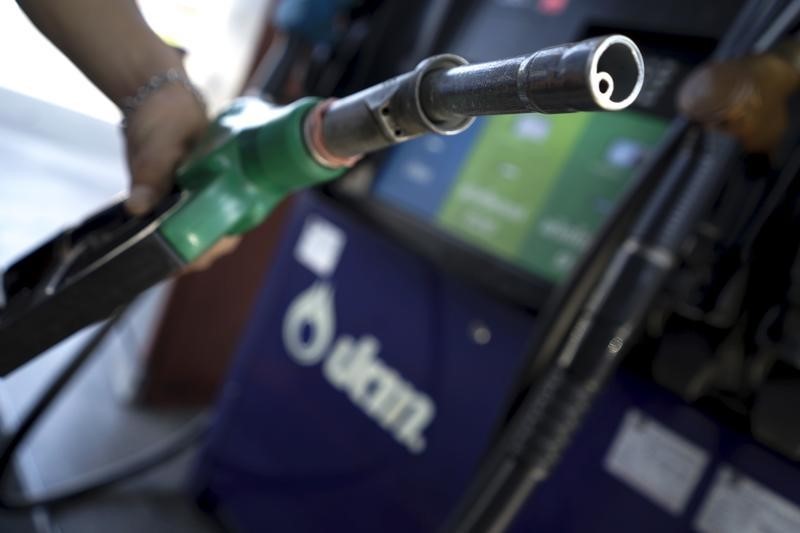Oil Above $90 as Soft CPI Takes Down Dollar; U.S. Crude and Gasoline Offset
2022.08.10 22:01

By Barani Krishnan
Investing.com — Crude advanced firmly into the $90-per-barrel territory as investors celebrated a weaker-than-expected U.S. consumer price reading that dragged rate hike expectations and the dollar lower.
Oil prices initially tumbled as much as 2% on the day as the flow of oil reportedly resumed on the Russian-owned Druzhba pipeline, after a brief blockade.
The market went deeper into the red after the U.S. Energy Information Administration reported a second straight weekly build of five million barrels in crude balances. But the agency also cited a drop of about five million barrels in gasoline inventories, and that helped offset the bearish sentiment hanging over the market.
The weak dollar was the clincher for those seeking direction in crude. The Dollar Index which pits the greenback against six majors led by the euro, hit a one-month low of 104.51.
The dollar tumbled after the Labor Department reported that the Consumer Price Index rose by 8.5% during the year to July versus a 9.1% annual expansion in June that marked its most in 41 years.
Economists polled by U.S. media had expected an 8.7% growth in the annual CPI reading for last month. For July itself, the index posted zero growth, versus an expansion of 1.3% in June.
Money market traders immediately priced in a higher probability for a 50-basis point, or half percentage point, hike at the Federal Reserve’s next rate revision meeting on Sept. 21. Prior to this, bets had been heavy for a 75-basis point, or three quarter percentage point, increase.
“This was a welcomed inflation report as every metric came in below consensus estimates,” said Ed Moya, analyst at online trading platform OANDA. “The headline build of 5.4 million barrels was greater than consensus estimate of a one million barrel increase [but] gasoline demand bounced back and that trend could continue as we are still in the peak summer driving season.”
West Texas Intermediate, the benchmark for US crude, was up $1.83, or 2%, to $92.33 per barrel by 2:10 PM ET (18:10 GMT). It rose just over $1.90 at the day’s peak for a session high of $92.42, and slid more than $2.80 later to reach an intraday bottom of $87.67.
Brent, the London-traded global benchmark for crude, was up $1.52, or 1.6%, to $97.83. It rose almost $2.10 for a session high of $98.40, and tumbled nearly $2.70 for an intraday bottom of $93.64.
WTI is up 3.7% so far for this week while Brent has gained around 2.9%. That was after last week’s slump that wiped 10% off the U.S. benchmark and nearly 14% off the London-based crude gauge. WTI also hit a six-month low of $87.03 last week while Brent slumped to $92.79, its lowest since February.
Crude oil inventories jumped by 5.458 million barrels during the week ended August 5 against a build of 73,000 barrels forecast by analysts tracked by Investing.com
In the previous week to July 29, crude stockpiles had also risen nearly five million barrels, or by 4.467 million to be precise.
The latest surge in crude stockpiles came as exports of crude fell almost 40% last week to 2.11 million barrels from a previous 3.51 million.
Production of crude also ticked higher, to an estimated 12.2 million barrels per day from 12.1 million.
In the case of gasoline, the top automobile fuel in America, inventories declined by 4.978 million barrels last week, against expectations for a drop of 633,000 barrels. In the previous week, gasoline balances rose by 163,000 barrels.
The drop in gasoline stockpiles came as the United States exported 1.13 million barrels of the fuel last week, the most in a week since December 2018.
Domestic demand for gasoline was also strong as per seasonal trends. Last week’s demand was 9.123 million barrels, just slightly lower than year-ago levels of 9.43 million.
U.S. consumption of gasoline dipped last month as pump prices hit record highs of $5 per gallon, prompting Americans to conserve on fuel. Prices have fallen since to just above $4 per gallon, encouraging demand again.
The EIA also reported an outflow of 5.3 million barrels from the US emergency oil reserve last week, bringing the balance in the so-called Strategic Petroleum Reserve to 464.6 million barrels — its lowest since April 1985.
The Biden administration has been leaning heavily on the reserve to add to crude supplies in the market amid the squeeze in global oil availability from the sanctions placed on Russia over the Ukraine conflict.
The administration is expected to continue withdrawing between 750,000 and 1.0 million barrels from the reserve daily until October to create more supply for refiners to turn into gasoline and bring down pump prices of that fuel.
In the case of distillates, stocks surprisingly grew by 2.166 million barrels last week. The expectation had been for a decline of 667,000 barrels. In the previous week, distillates had fallen by 2.4 million barrels. Known as middle-of-the-barrel oil, distillates are refined into the diesel that runs trucks, buses, trains and ships, as well as the fuel needed to fly airplanes.








